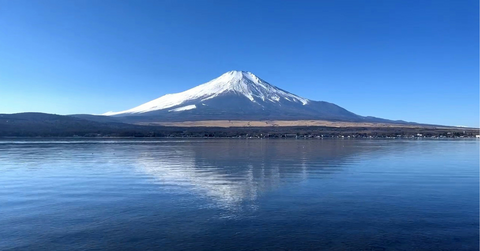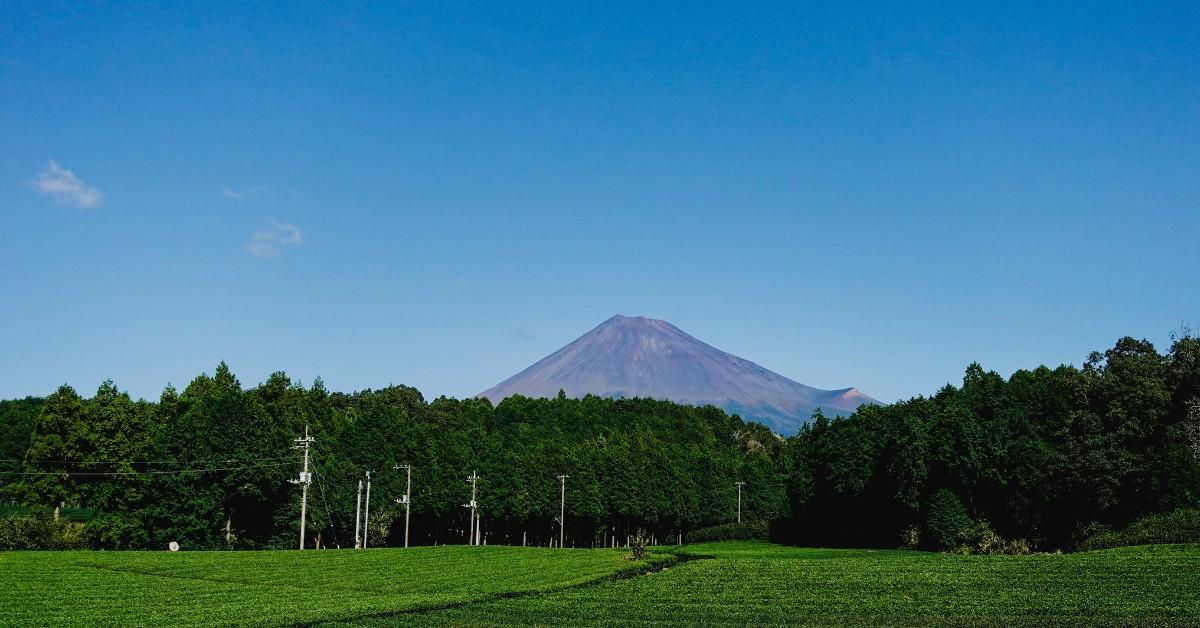Mount Fuji Breaks a 130-Year-Old Record Thanks to Japan’s Extremely Hot Summer
Climate change is believed to be behind the record lack of snow.
Published Nov. 11 2024, 1:11 p.m. ET

Mt. Fuji's iconic snowcapped mountains remained bare for longer than they have in 130 years — when they first began keeping records about the snow — prompting concerns about climate change. According to experts, the volcano's snowcap normally becomes visible from a distance in early October.
In October 2024, tragically, there was no such vision in sight. Instead, the mountain's peak appeared as it did all summer into November.
Learn more about the record-breaking heat that led to the late start of Mt. Fuji's snowfall in 2024, including why experts believe this may become the norm in the future thanks to climate change, below.

Mt. Fuji's snowcap was missing in 2024.
Those who had the opportunity to view the landmark had to miss out on the picturesque snow that typically begins to fall at the start of October. That's because it was too hot for any of the snow to accumulate at the top of the volcano's peak, according to The Guardian.
The Guardian also stated that Japan's record-breaking heat was part of the problem. 2023 holds the next record, which includes the last time the snowfall was delayed on the mountain.
One local forecaster spoke with the AFP news agency, per The Guardian, where he explained how the country continued to feel the heat well into the start of fall.
"Temperatures were high this summer, and these high temperatures continued into September, deterring cold air," Yutaka Katsuta said.
People both near and far celebrated once the snow was finally visible on Nov. 6, 2024, when the clouds cleared enough for meteorologists to confirm its arrival, according to the BBC. The publication shared several happy tweets from people looking forward to the sight, including some who were worried about what the delayed snowfall could mean.
While it sounds like many experts believe that incidents like this late snowfall could become more common as the world continues to fail at mitigating the things causing climate change, the BBC notes that it's hard to confirm that it's behind this as well.
When did Mt. Fuji last erupt?
It's been over 300 years since the volcano inside Mt. Fuji erupted. According to National Geographic, the volcano last spewed its hot lava and ash on Dec. 16, 1707, when an 8.6 magnitude earthquake likely triggered it.
Experts can theorize much of what ensued after the eruption based on what they've discovered in the hundreds of years since the disaster. They believe that the eruption caused what is now the center of Japan's capital to be covered in a blanket of ash.
National Geographic also says that the eruption likely caused countless deaths, including those who were killed long after the ash had settled and rendered most of the region's agricultural fields to wither and die, leading to mass starvation.
According to the Japan Times, it's not out of the realm of possibility that locals could experience that same fate sometime in the future. In fact, experts believe that the volcano could literally erupt at any time.
While that may sound scary, it seems like nobody actually expects anything to happen anytime soon.